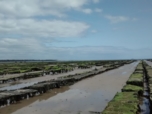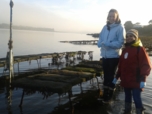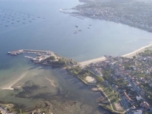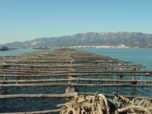Dungarvan Bay (Marine Institute, Ireland)
Dungarvan Bay is the main Irish site used in VIVALDI. The only species cultivated there are cupped oysters, with high mortalities associated with the virus OsHV-1 since 2008. Regular sampling and monitoring are realised on this site, which has also been chosen to test the risk-models designed in the context of the project.
Bay of Brest (CNRS/Ifremer, France)
Located in North west of France, the Bay of Brest constitutes a coastal macrotidal and semi-enclosed ecosystem, influenced by both freshwater inputs from rivers and fast mixing exchanges with the Atlantic Ocean through a narrow and deep channel.The two main shellfish aquaculture activities in the Bay of Brest are mussel and oyster culture.
Ría de Vigo (CSIC, Spain)
The Ría de Vigo is an estuary in Galicia, in the North West of Spain. Historically, the Vigo estuary area has been good for fishing and shellfishing, although current conditions are not ideal due to high human and industrial pressure on coastal waterfront. The most cultivated species are mussel and clam but there is also a production of oysters, cockles and scallops.
Ebro Delta (IRTA, Spain)
The Ebro Delta Bays (Alfacs and Fangar Bays) are situated in the south of Catalonia and are the main shellfish production areas of the Spanish Mediterranean. The main species cultivated are the Mediterranean mussel, Pacific oyster, and Manila clam.





